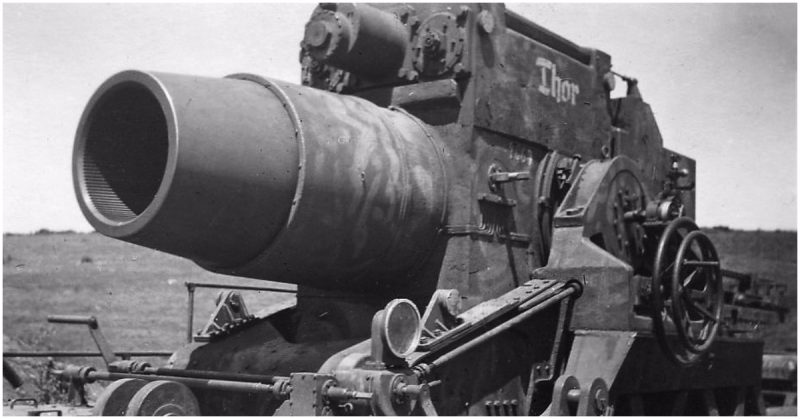During World War 2, the Germans were famous for designing and producing mega war artillery. One of the most notable German Mortar Guns was the Mortar Karl, an imposing machine that could fire shells of up to 2170kg and were 60cm in diameter. Its power was enough to fire lighter shells at targets at a distance of more than 10kms.
The Germans built six guns and one test gun. These colossal guns fought the most vicious of wars when they were used to attack the Soviet bastions situated at Brest-Litovsk and Sevastopol. The guns were also used to attack Polish fighters in their Capital, Warsaw.
The Mortar Karl was instrumental in the German offensive against the Allied forces when they battled in the Bulge. It is also recorded that Mortar Karl was used in their attempt to bring down the captured bridge at Ludendorff, the battle at Remagen.
Today only one Mortar Karl, the one meant for testing, exists after the other six were disposed of after the end of the war.
The German military artillery production Company, Rheinmetall, was instrumental in the conceptualization and eventual production of the Mortar Karl. In the month of March 1936, the company proposed to build an extremely weighty howitzer to bombard France’s concrete fortification popularly known as ‘Maginot Line.’
The initial concept envisaged a kind of weapon that was capable of being transported on tracked vehicles for assembly on site. However, the preparation took much longer leading to the concept changing the design of automatic artillery in the first month of 1937.
After the first production of the Karl Mortar, driving trials to test the tremendously raised ground weight and navigating such a humongous vehicle were conducted between 1938 and 1939. Firing trials were held in 1939, followed by complete driving trails in 1940.
Instrumental to the production of Mortar Karl was General Karl Becker the German weapons engineer and artillery. The gun derived its nickname from the General.
The six guns and one test gun were delivered between November 1940 and August 1941.
They six were nicknamed as:
i. “Adam” (later “Baldur”)
ii. “Eva” (later “Wotan”)
iii. “Thor”
iv. “Odin”
v. “Loki”
vi. “Ziu”
Movement and Support
The Mortar Karl presented a logistical challenge. Having a weight of 124 tonnes and fitted with either a gasoline or a diesel engine that provided a top speed of 6.2mph, the Karl-Gerät only used the speed for aiming purposes. The plinth had just four degrees of navigation on both sides. To move any distances, it had to be dissembled into seven loads by means of a special mobile crane.
After disassembly, the chassis would be loaded onto a trailer with six axles while the other six lighter loads were placed on a trailer with four axles. Whenever they encountered a bridge not strong enough to withhold the weight of the loaded trailers, the chassis was unburdened and carried across separately.

The chassis was loaded onto a six-axle Culemeyer-Strassenroller lowboy trailer. The other parts of the gun were lighter and used four-axle trailers. If the trailer with the chassis on board had to cross a bridge that couldn’t carry their combined weight the chassis had to be off-loaded and driven across under its own power.
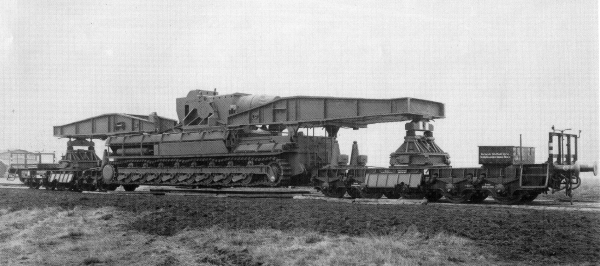
The Karl-Gerät was moved via rail for long distances. Over short distances, it would comfortably move on its own on top of the normal soil. However, driving across soft soil was prohibited since it could quickly lose a track
The original Mortar shells could make a 49 ft. and 16 ft. wide and deep crater respectively over a concrete wall. It could not, however, make much range because of its colossal weight.
A lighter version of the 040 was presented in 1942 and could easily cover a distance of 10km. Other versions, like the 041 with a 52cm diameter, were tested but were never used until 1944.
Combat History
1941
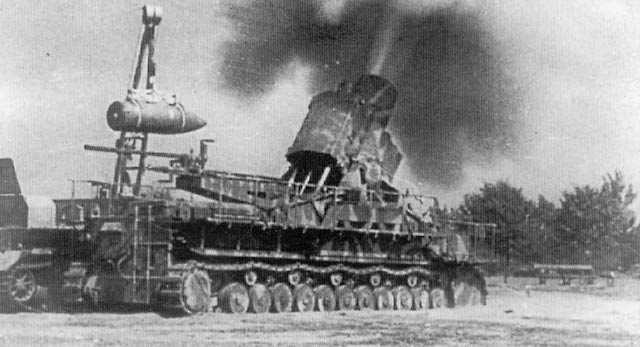
On 1 May 1941, two Batteries each having dual howitzers were formed with instructions to be ready for war as preparations for an offensive at Barbarossa were underway. In 14th May 1941, the battery was commanded to bombard the Red Army border bastions close to Lviv. The foremost priority was to bombard the Soviets at Lviv, as the other bombarded Brest bastions. The first battery was issued with 60 rounds of Mortar shell while the other got 36 rounds.
There is scant information about the two batteries except for the IV German Army Corps report on 23rd June of the same year. The first battery was not in service anymore owing to technical malfunctions while the second one, though having accomplished to fire 31 out of its 36 rounds, had assembly glitches regarding the electrical firing mechanism besides also having non-standard ammunition.
1942
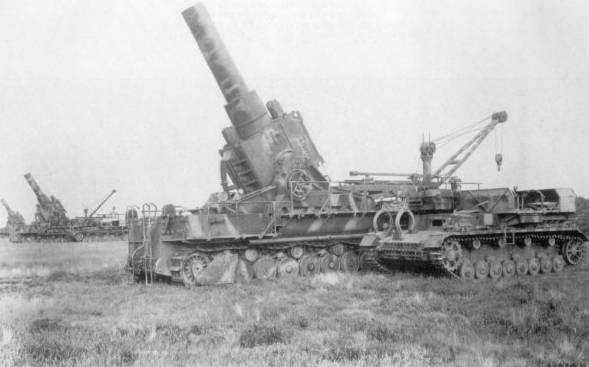
On 18th February 1942, “Odin” and “Thor” were camouflaged into firing positions forming Karl-Batteries against the Soviets in preparation for the attack on Sevastopol.
On 20th May 1942, three Mortar Karl’s were had been fully armed with an aggregate of 72 and 50, heavy and light Mortar shells respectively. Between 2nd and 6th June, a total of 19 heavy ammunitions were fired by the Karl-Geräte. 54 heavy shells bombarded on 7th while the 50 lighter shells were launched between 8th and 13th June of the same year.
Additional shells including 29 and 50, heavy and light ones respectively were shipped in within the month of June. All the additional light ammunitions were blazed on 30th June while 25 heavy ones were fired the next day. The shells fired did a lot of damage both to the Soviet’s concrete bastions which supported the turrets and the command nerve which was located at a range of 600 meters.
On July 19th, 1942 the guns were shipped by the battery towards Hillersleben for renovation.
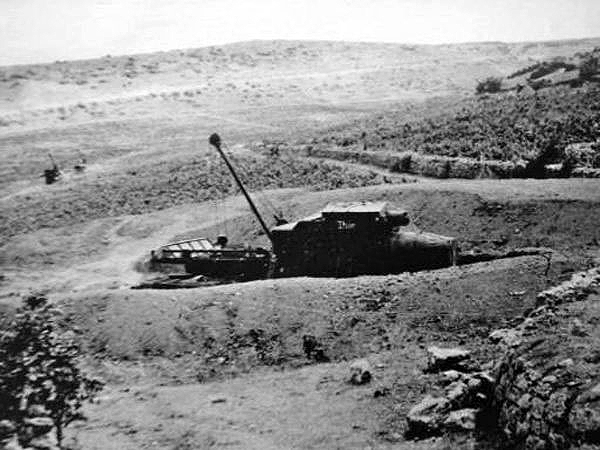
After several thwarted German advances by the Red Army, the High Command of the German Army referred to in German as (Oberkommando des Heeres (OKH)) called back the battery on 4th December 1942 after it had become apparent that it no longer had a mission.
1944
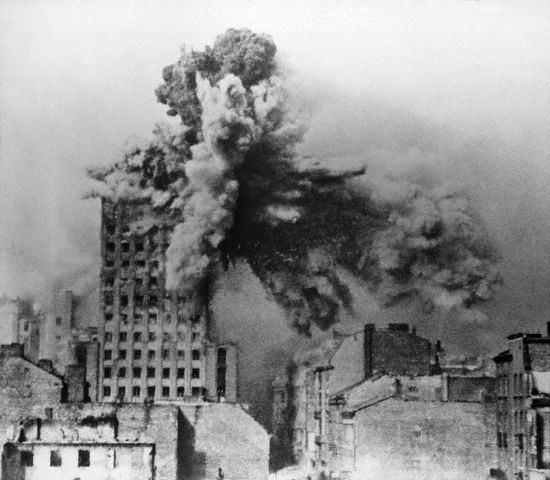
With the advent of an uprising in Warsaw uprising, a battery was commissioned on 13th August 1944 to suppress it. Karl-Gerät ‘Ziu’ reached the Warsaw West train station on 17th August 1944 at 07:00hrs. Its ammunition was delivered the next morning.
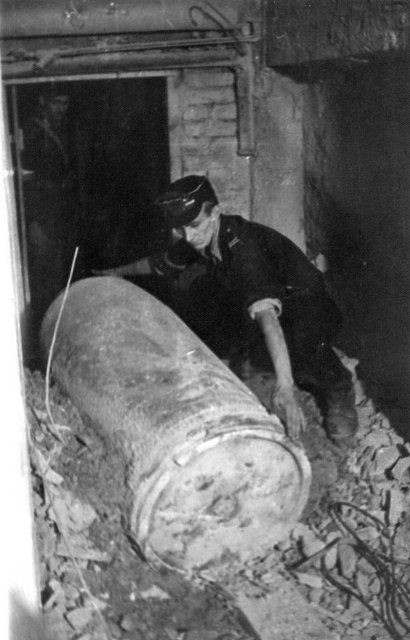
‘Ziu’ was successful in its mission in Warsaw prompting the OKH to order another battery which arrived on 7th September 1944 at 12:57hrs.
A third Mortar Karl, 040 arrived in Warsaw on 10th September. On 22 September, ‘Ziu’ was shipped to Jüterbog for repairs. A fourth Mortar Karl arrived in Warsaw and by 25 September was reported operational.
1945
Little is known of their activities during the last months of the war, but Gerät Nr. II “Eva” was damaged en route by a bomb and was back in Jüterbog on 6 January 1945. It was repaired using parts from Karl Nr. I “Adam” by 3 February.
Gerät Nr. IV “Odin” was damaged by a number of penetrating hits and arrived in Jüterbog on 31 January. Gerät Nr. VI “Ziu” was still at the front on 19 January. In the meantime Nr. V was modified to use the 54 cm howitzer and had its engine rebuilt.
Battery 628 was initially ordered to the Vistula Front on 7 March, but this was countermanded on 11 March and the battery was sent west to the Remagen area. The German High Command (Oberkommando der Wehrmacht) war diary reported that 14 rounds were fired at the Remagen Bridgehead on 20 March 1945.
Battery 428 was also ordered to the west on 11 March but served in the 1st Army sector.
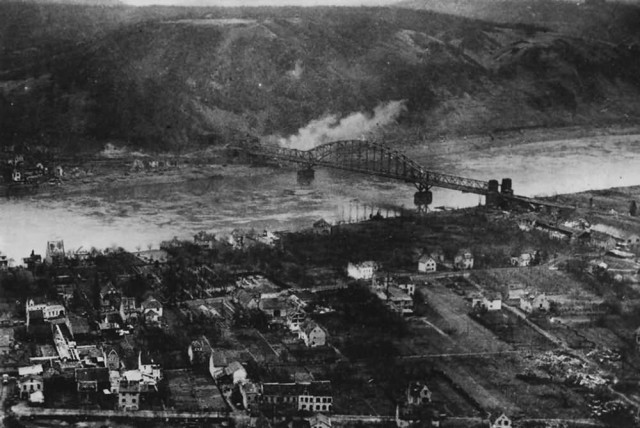
The fourth (Gerät Nr. IV) was ruined by hits that penetrated its body and became grounded in Jüterbog, on 31st January. The sixth Karl-Gerät, Nr.VI remained at the front by 19 January. Meanwhile the Nr.V underwent a refurbishment to employ the 54cm howitzer. Its engine was also renovated.
On 20th March 1945, 14 rounds of shells were fired by the Battery 628 at the Remagen Bridgehead.
After the war
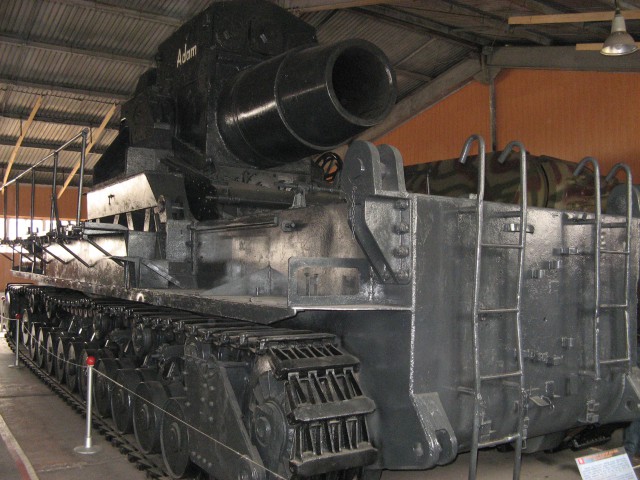
Nr. II (“Eva”) as well as Nr. V (“Loki”) were captured by US forces between 21 March to 11 April 1945. The Us Army captured Nr. VII, the test weapon in Hillersleben and it was shipped to the Aberdeen Proving Grounds but later scrapped.
The Red Army captured Nr. VI (“Ziu”), most likely when they took Jüterbog on 20 April 1945, it is now on display at the Kubinka tank museum, but incorrectly marked as Nr. I (“Adam”).
Nr. IV (“Odin”) and VI (“Ziu”) were captured by the Red Army. “Ziu” was probably captured when they overran Jüterbog on 20 April 1945. This is on display at Kubinka, although marked as Nr. I (“Adam”).
It is unknown what happened to Nr. I (“Adam”) and Nr. III (“Thor”), it can be assumed both were captured by the Red Army at Jüterbog, but it is not certain.
